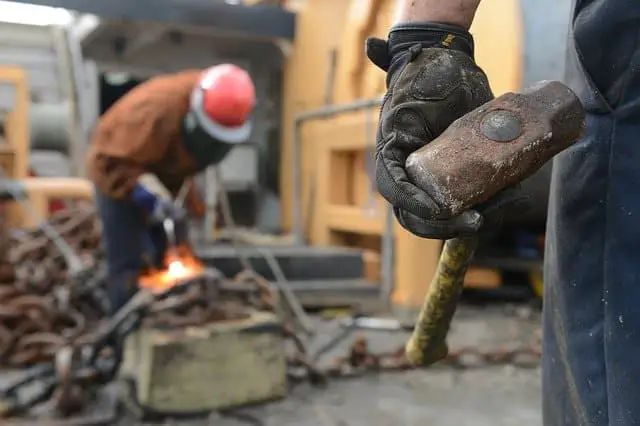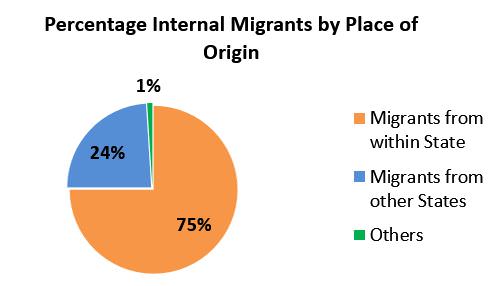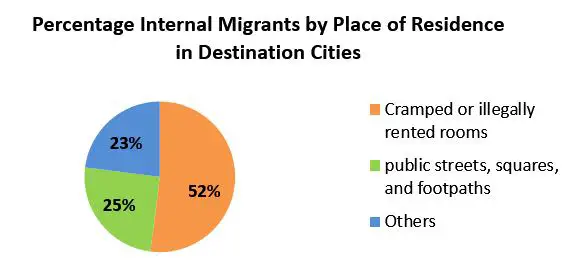They migrated to cities in hope of a hope for better life, livelihood and nothing but happiness. Had it been any other day, the statement would not have seemed significant. It took a pandemic to re-visit our cities, and bring out the plight of otherwise forgotten urban poor. Cities in urban India are flooded with urban poor. Migration and creation of slums are two inevitable symptoms of urbanisation. Today, most of them have their eyes soaked in forgotten dreams and pockets full of dust and hopelessness. Rendered unemployed and homeless with no shelter to guard them or food to feed them, hundreds of thousands of labourers chose to leave and leave us with a stark realization…
While their journey back should have been a grim reminder of how our cities and policies failed to provide them with basic amenities, we still chose to worry about lost beast of burden. Instances like cancellation of trains to prevent loss of migrant labour have started to put humanity at stake.
After facing so much trouble, I have decided not to return. I will stay here in my village and will do anything to earn a living, there is no question of migrating again
are the words of a migrant worker from Bihar working in a factory in Tamil Nadu. …we need them more than they need us.
Today, many like him have decided to stay back in their native towns and villages and do anything locally to make a living but return to cities. The intoxication to earn more, that urbanisation brought along is gone. As per reports, thousands of migrant workers are working under MGNREGA after returning home to earn their livelihood and though they are earning less but they feel contented and happy.
Why did the lockdown prompt them to flee cities? In crises like this, was returning back the only option?

Uncloaking the Seasonal Migrants
These urban poor are seasonal migrants (persons who stayed away from home for 30 days or more but less than 6 months) who circulate between villages and cities several times a year. They are not so surprisingly not included in our census surveys, given the informal conditions they live and work in. Migrants have few reasons to stay in their destination cities, and many reasons to leave, the pandemic only asserted it.
These migrants move mostly within the same state. As per (NSSO, 2010) among the rural migrants, nearly 94 per cent had migrated from within the State and with only 5 per cent were from other states. For urban migrants nearly 75 per cent had migrated from within the State and 24 per cent from other States.

This short-term migration is mainly taken for employment related purposes only and it is found to show a decreasing trend with the increase in Monthly per Capita Expenditure (MPCE).
The data from (NSSO, 2010) showed that 35 million workers are registered under various construction welfare boards, which makes 3 percent of the population but there are many others who go unregistered at hands of companies and individuals wanting to escape stringent laws. In the cities they toil hard in and to whose prosperity they add, they have no rights or even a place to call their own. As much as 52 percent of them live in cramped and usually illegally rented rooms while 25 percent sleep on public streets, squares, and public footpaths.

Only less than 3 percent had ration cards making it a nightmare for remaining 97 percent to go without food until the state recognised the large unorganised sector prevailing in country that either is not a part of public distribution system network, have ration card of a different state or may have left it back home. As companies and real estate firms worry about potential labour shortages, the question arises,
What went wrong?
A recent study by the International Food Policy Research Institute observed that the PDS coverage in urban areas is low at about 50 percent leaving out many urban poor. The central food security scheme currently covers about 66.2 percent of the Indian population, and leaves out many of its poorest. Dipa Sinha, the assistant professor at Ambedkar University, Delhi highlights the primary reason being the list of beneficiaries of the public distribution system not been updated timely.
Only if the pandemic had struck earlier, they could have been noticed before. Only if they were noticed before, they could have been made a part of the formal system. Only if they were registered somewhere, they could have been given homes under PMAY and not been left to die on streets or on their way back home.
Over the years a lot of research has been done highlighting the need for affordable renting housing under PMAY for those of low-income households who suffer income volatility, lack the minimum amount required to access house or loan and are involved in high-risk profile informal sector. Research suggests that affordable housing leads to better access to health care, education, and to perceived control and life-satisfaction.
It took a disaster and over a hundreds of thousands positive cases for government to seek something which had been there since more than four decades- The challenges faced by migrant labourers. Only now they have decided to intervene into PMAY and provide affordable rental houses to migrant workers and urban poor; make ration cards usable across states and give ration to people without PDS cards. The pandemic came as a blessing in disguise for millions of otherwise ‘unnoticed and nowhere’ people of India.
The Vacant Houses
For instance, the city of Madurai as per census 2011 has as much as 3,29,775 census houses lying vacant in Municipal Corporation area. Considering average unit size as 50 square metre (LIG HH), area under them amounts to 1,64,88,750 square metre. As per news reports, at least one lakh migrant labourers[1] are currently out of work and kept in quarantine shelters across Tamil Nadu. Considering average living space per person to be 10.2 metre square, the total area required to house the migrants would come out to be 10.2 lakhs metre square which is still less than the total vacant housing space available in city.
| Number of Vacant Houses in Madurai
A |
Average Unit Size (Square Metre)
B |
Total Area under Vacant Houses (Square Metre)
A*B |
| 3,29,775 | 50 | 1,64,88,750 |
Source: Census 2011; PMAY, MoHUA
These are the statistics from one city. Imagine the vast amount of vacant space, unidentified or maybe overlooked lying in other cities. As per census 2011, as many as 38,49,000 census houses across the country are lying vacant. The map highlights the number of vacant census houses and seasonal migrants in each state. Only if we had provisions for rental housing in place, the migrants stranded on road or living in oven-hot shelters today would have been living in decent spaces in vacant PMAY houses.
Reflect and Respond
This piled up ill-preparation over the years has reflected the real costs today. It has highlighted the need for authorities to respond to migrant communities at crucial moments and prepare for their future rehabilitation and resilience. Policymakers were unprepared for the speed and desperation with which these migrants attempted to return home following the lockdown order. A proper response to recognise and register circular migrants as a part of India’s urban population is required at both state and centre level. The crisis has laid bare in front of us the pity conditions of nowhere people of India and highlighted their plight. It’s time we realize their importance and plan inclusively with them and for them. The short term measures and inhuman approach cannot address old structural problems. Authorities need to soften their view of migrants as a law and order problem, an attitude that has been all too clear during this crisis.
Author Bio: Vallary Gupta, an Architect, Pursuing Masters in Urban and Regional Planning. I was awarded the University Gold medallist in Bachelors and have bagged a few design awards at National level. As an avid learner, I am keen about exploring new things. I have a string inclination towards bringing about a change at grassroots and achieving the greater goal of sustained equity.
References
- (2013), State of Housing in India, A Statistical Compendium, MoHUA
- (2010), Migration in India, NSSO
- Mohd (2020), Back Home After Losing Work, Bihar’s Migrant Workers Now Unwilling to Return. Retrieved from https://www.newsclick.in/Home-After-Losing-Work-Bihar-Migrant-Workers-Unwilling-Return
- Anubhuti, (2020), PMO weighs food for all, may do away with need for ration card, IDs. Retrieved from https://economictimes.indiatimes.com/news/economy/policy/pmo-weighs-food-for-all-may-do-away-with-need-for-ration-card-ids/articleshow/75112950.cms
- (2020) Govt to launch affordable rental housing scheme, announces FM Sitharaman. Retrieved from https://www.livemint.com/news/india/govt-to-launch-affordable-rental-housing-scheme-11589455581562.html
- Sayantan, (2020), No ration cards, no food supplies. Hunger stalks rural India. Retrieved from https://www.livemint.com/news/india/no-ration-cards-no-food-supplies-hunger-stalks-rural-india-11586197320697.html
- Tariq, (2020), Despite Covid-19, why did migrant workers go back? Opinion. Retrieved from https://www.hindustantimes.com/analysis/despite-covid-19-why-did-migrant-workers-go-back/story-NPhLzTd4joLSovjMDxCtaM.html
- Archana and Kotoky, Anurag (2020), workers in India may shun cities after coronavirus lockdown
Retrieved from https://www.deccanherald.com/national/migrant-workers-in-india-may-shun-cities-after-coronavirus-lockdown-826070.html
[1] NSSO provides data on number of seasonal migrants at state level and not at city level and therefore due to data unavailability, the statistics have been compared at state level.